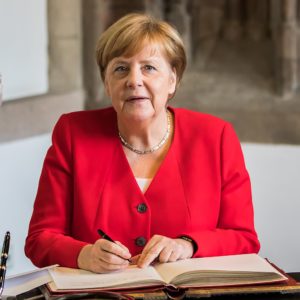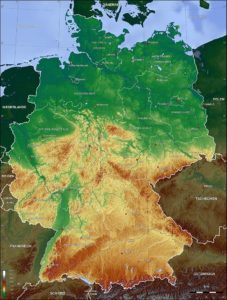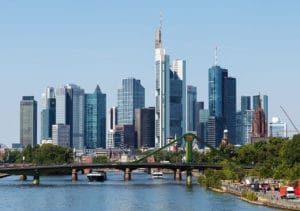Since reunification, Germany has taken a more active role in the European Union, signing the Maastricht Treaty in 1992 and the Lisbon Treaty in 2007, and co-founding the Eurozone. Germany sent a peacekeeping force to secure stability in the Balkans and sent German troops to Afghanistan as part of a NATO effort to provide security in that country after the ousting of the Taliban.

In the 2005 elections, Angela Merkel became the first female chancellor. In 2009 the German government approved a €50 billion stimulus plan. Among the major German political projects of the early 21st century are the advancement of European integration, the energy transition (Energiewende) for a sustainable energy supply, the “Debt Brake” for balanced budgets, measures to increase the fertility rate (pronatalism), and high-tech strategies for the transition of the German economy, summarized as Industry 4.0. Germany was affected by the European migrant crisis in 2015: the country took in over a million migrants and developed a quota system which redistributed migrants around its federal states.
Geography:
Germany is in Western and Central Europe, bordering Denmark to the north, Poland and the Czech Republic to the east, Austria to the southeast, and Switzerland to the south-southwest. France, Luxembourg and Belgium are situated to the west, with the Netherlands to the northwest. Germany is also bordered by the North Sea and, at the north-northeast, by the Baltic Sea. German territory covers 357,022 km2 (137,847 sq mi), consisting of 348,672 km2 (134,623 sq mi) of land and 8,350 km2 (3,224 sq mi) of water. It is the seventh largest country by area in Europe and the 62nd largest in the world.

Elevation ranges from the mountains of the Alps (highest point: the Zugspitze at 2,963 metres or 9,721 feet) in the south to the shores of the North Sea (Nordsee) in the northwest and the Baltic Sea (Ostsee) in the northeast. The forested uplands of central Germany and the lowlands of northern Germany (lowest point: Wilstermarsch at 3.54 metres or 11.6 feet below sea level) are traversed by such major rivers as the Rhine, Danube and Elbe. Significant natural resources include iron ore, coal, potash, timber, lignite, uranium, copper, natural gas, salt, and nickel.
Economy:
Germany has a social market economy with a highly skilled labor force, a low level of corruption, and a high level of innovation. It is the world’s third largest exporter of goods, and has the largest national economy in Europe which is also the world’s fourth largest by nominal GDP and the fifth by PPP. The service sector contributes approximately 69% of the total GDP, industry 31%, and agriculture 1% as of 2017. The unemployment rate published by Eurostat amounts to 3.2% as of January 2020, which is the fourth-lowest in the EU.

Germany is part of the European single market which represents more than 450 million consumers. In 2017, the country accounted for 28% of the Eurozone economy according to the International Monetary Fund. Germany introduced the common European currency, the Euro, in 2002. Its monetary policy is set by the European Central Bank, which is headquartered in Frankfurt.
